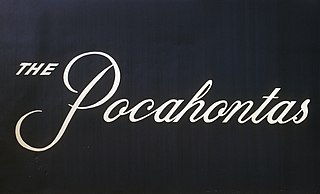
GWR 3700 Class 3440 City of Truro is a 4-4-0 steam locomotive built in 1903 for the Great Western Railway (GWR) at Swindon Works to a design by George Jackson Churchward. It was partially rebuilt in 1911 and 1915, and renumbered 3717 in 1912. Although it is a point of contention, some believe the locomotive to be the first to attain a speed of 100 miles per hour (160.9 km/h) during a run from Plymouth to London Paddington in 1904.
On February 8, 1986, twenty-three people were killed in a collision between a Canadian National Railway freight train and a Via Rail passenger train called the Super Continental, including the engine crews of both trains. It was the deadliest rail disaster in Canada since the Dugald accident of 1947, which had thirty-one fatalities, and was not surpassed until the Lac-Mégantic rail disaster in 2013, which resulted in 47 deaths.

The Wreck of the Old 97 was an American rail disaster involving the Southern Railway mail train, officially known as the Fast Mail, while en route from Monroe, Virginia, to Spencer, North Carolina, on September 27, 1903. Travelling at an excessive speed in an attempt to maintain schedule, the train derailed at the Stillhouse Trestle near Danville, Virginia, where it careened off the side of the bridge, killing 11 on-board personnel and injuring seven others. The wreck inspired a famous railroad ballad, which was the focus of a copyright lawsuit and became seminal in the genre of country music.

The Pocahontas was one of the named passenger trains of the Norfolk and Western Railway. It ran overnight between Norfolk, Virginia, and Cincinnati, Ohio, with a through-car to and from Chicago, Illinois. The Pocahontas ran from November 1926 until May 1971.

The Norfolk and Western J class was a class of 14 4-8-4 "Northern" streamlined steam locomotives built by the Norfolk and Western Railway (N&W) at its Roanoke Shops in Roanoke, Virginia, between 1941 and 1950. The most powerful 4-8-4 locomotives ever produced, the J class were part of the N&W's "Big Three" that represented the pinnacle of steam technology.

The Rockport train wreck occurred in Rockport in Mansfield Township, New Jersey, United States, about three miles outside of Hackettstown, on June 16, 1925. A violent storm washed debris onto a grade crossing, derailing a Lackawanna Railroad (DL&W) train. The crash killed 42 passengers and five crewmen and injured twenty-three others.

The Corning train wreck was a railway accident that occurred at 5.21 a.m. on July 4, 1912, on the Delaware, Lackawanna and Western Railroad at East Corning freight station in Gibson three miles east of Corning in New York State, leaving 39 dead and 88 injured.
The Fast Mail was a Southern Railway mail and express train that operated between Washington, D.C., and New Orleans, Louisiana. The southbound Fast Mail carried the train number of 97, and was later known by the nickname of "Old 97". One such trip made by the train, on September 27, 1903, derailed at Stillhouse Trestle in Danville, Virginia, and was later known as the "Wreck of the Old 97", for which the service was most well known.
The Indianola Train Wreck was a railway accident that occurred at 7:08 a.m. on May 29, 1911, on the Chicago, Burlington and Quincy Railroad one half mile west of Indianola, Nebraska leaving 18 dead and 32 injured.
An accident occurred on the four-track mainline of the New York Central Railroad at 10:02 P.M. on March 27, 1953, 2.4 miles east of Conneaut, Ohio. It began when an improperly secured load of pipe broke loose from a gondola car on an eastbound freight train, damaging the westbound passenger track. A passing westbound freight crew notified the first train and stopped to assess what had happened, but a fast westbound passenger train could not stop and was derailed by the damaged track, colliding with the adjacent westbound freight. Finally, an eastbound fast passenger train struck the derailed equipment from the first two trains. There were 21 deaths and 49 people were injured. This accident holds the record for the most trains involved in a single accident.

The Cedar train wreck occurred on the night of January 23, 1956, when the Norfolk and Western (N&W) Pocahontas passenger train derailed at more than 50 mph (80 km/h) along the Tug River near Cedar, West Virginia. The accident killed the engineer and injured 51 passengers and nine crew members. It was the last major wreck of a steam-powered revenue passenger train in the United States.







